Massoud M. Engineering Thermofluids: Thermodynamics, Fluid Mechanics, and Heat Transfer
Подождите немного. Документ загружается.


592 IVd. Heat Transfer: Thermal Radiation
QUESTIONS
– What was the role of ether in classical mechanics and electromagnetism?
– Who described the energy of particle-like waves?
– Does light travel as a wave or as a particle?
– Which broadcast wave is more energetic? AM or SW?
– If a radio station broadcasts on 100 m wavelength, what is the corresponding
frequency?
– What is the difference between a plane angle and a solid angle?
– What is the value of a solid angle for a hemisphere? What is its value for a
sphere?
– What is the difference between radiation intensity and radiosity?
– What are diffuse emitter and diffuse incident radiation?
– What are the Wien’s distribution and Kirchhoff’s radiation laws?
– What are the important features of the Planck distribution?
– What is meant by band emission? Calculate the band emission for
λ
T = 3000
µ
m·K and compare your result with the corresponding value given in the table
of Section 2.1.
– Is it fair to say that a red rose absorbs all other colors but reflects the color red?
– For most engineering applications, are surfaces specular reflectors or diffuse re-
flectors?
– What is the unit of spectral irradiation?
– What are the advantages of a diffuse gray surface?
– What is the role of the view factor in thermal radiation?
– What is the reciprocity relation?
– What are the key assumptions in analyzing radiation exchanges in enclosures?
– What is the Oppenheim approach in solving problems involving radiation ex-
change?
– What is the physical interpretation of surface resistance? What other resistance
to radiation heat transfer do you know?
PROBLEMS
1. Shown in the left side figure, is the differential solid angle d
Ω subtended by the
differential area dA when viewed from point P. We define the solid angle at point
P as the projection of the surface on a sphere of unit radius surrounding the point.
Thus, the differential solid angle d
Ω subtended by surface dA in the left side fig-
ure below is given by
()
2
/ rAddd Ω⋅=Ω=Ω
K
K
K
. a) Use this definition to compute
the solid angle
Ω subtended by a circular disk of radius a at a point P that is lo-
cated a distance R from the disk, where P lies on the normal n passing through the
center of the disk, as shown in the right figure. b) Find
Ω as a →∞. [Ans.: b)
Hemisphere].
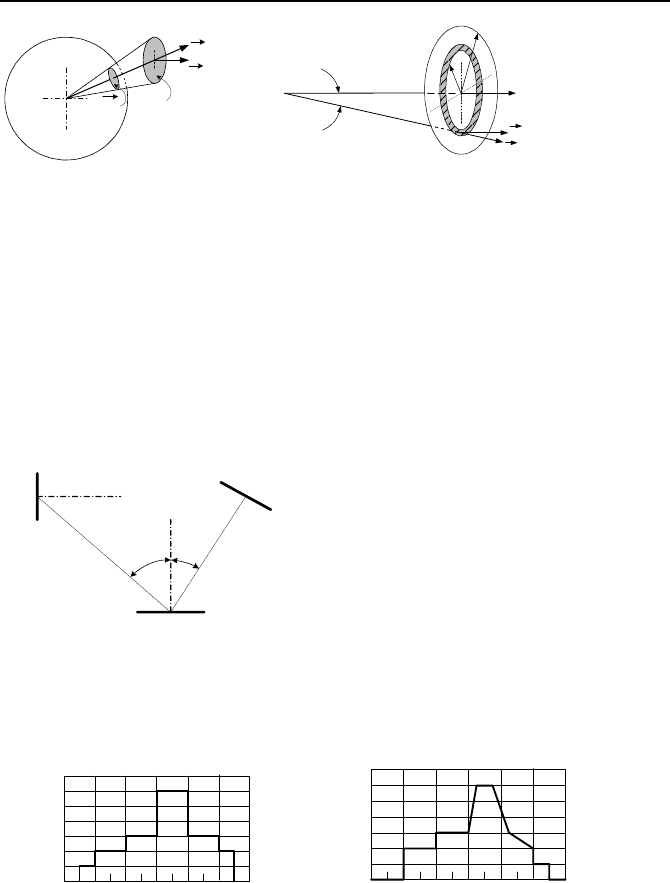
Questions and Problems 593
n
Ω
dA
dΩ
r
P
P
n
n
R
r
ρ
a
Ω
α
2. The surface of a sphere of radius R emits S
o
photons isotropically towards the
center of the sphere. Find total number of photons received at the center of the
sphere per second and per unit area. [Ans. S
o
].
3. Surface A
1
is a diffuse emitter with an emission intensity of 10,000 W/m
2
·sr in
the normal direction. The orientation of surfaces A
2
and A
3
is such that
ϕ
1
= 60
o
and
ϕ
2
= 30
o
. a) find the solid angles subtended by surfaces A
2
and A
3
, b) compare
the intensity of the radiation emitted by surface A
1
in the direction of surface A
2
with the intensity of the radiation emitted by surface A
1
in the direction of surface
A
2
. c) find the rate of energy received by surfaces A
2
and A
3
due to the radiation
emission from surface A
1
.
Data: A
1
= 0.0020, A
2
= 0.0015, A
3
= 0.0010 m
2
, r
1
= 35 cm, r
2
= 65 cm.
A
1
A
2
ϕ
1
r
1
ϕ
2
A
3
r
2
4. Find the energy associated with a radiation having a wavelength of 1E-3
µ
m.
(Ans.: 1.98E-16 J)
5. The spectral distribution of the radiation emitted by a diffuse surface is ap-
proximated in the figure. Find the total emissive power and the total intensity.
020406080100
200
1000
λ
(
µ
m)
(
E
λ
,
W
/
m
2
.
µ
m
)
120
600
0246810
600
1000
λ
(
µ
m)
G
λ
,
(
W
/
m
2
.
µ
m
)
12
1400
200
Problem 5 Problem 6
6. A spectral distribution for a surface irradiation is approximated as shown in the
figure. Find the total irradiation.
7. The emissive power of a blackbody, at 0.8
µ
m wavelength is measured as 1E5
W/m
2
·
µ
m. Find the blackbody temperature. [Ans. 1739 K]
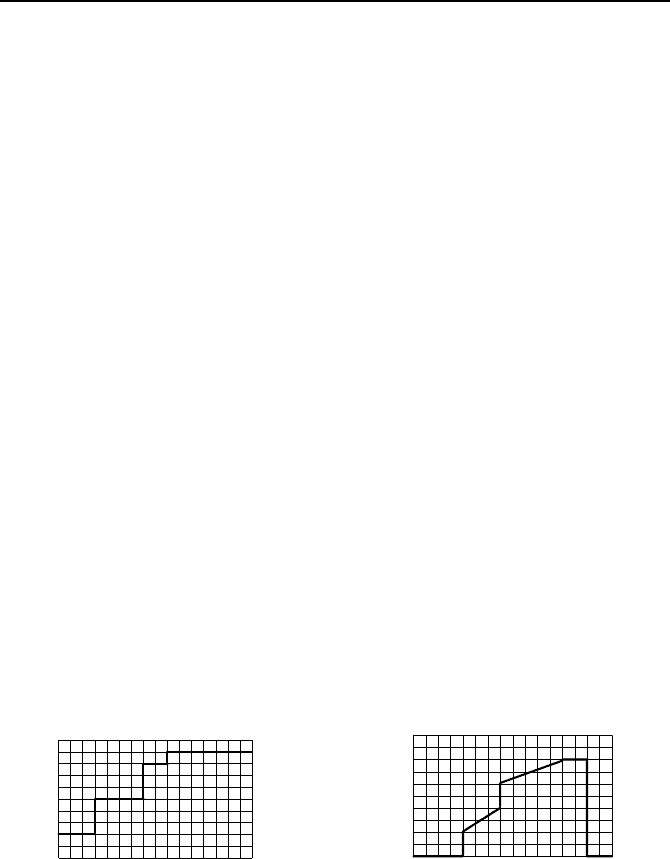
594 IVd. Heat Transfer: Thermal Radiation
8. Solve Example IVd.2.3 for a forced convection heat transfer coefficient of
7,500 W/m
2
·K. Solve the same example but for the surface temperature of 250 C.
9. A blackbody is at a temperature of 2000 K. Find a) the percentage of energy
emitted in the shorter than visible range, b) the percentage of energy emitted in the
longer than the visible range, c) the percentage of energy emitted in the visible
range, and d) the rate of energy emitted in the visible range
10. A blackbody is radiating at a constant temperature of 2500 K. Find a) the
emissive power of radiation from this blackbody, b) the wavelength below which
15% of he radiation of the blackbody is concentrated, c) the wavelength above
which 10% of the emission is concentrated, d) the maximum spectral emissive
power, e) the wavelength associated with the maximum spectral emissive power.
11. The blackbody in Problem 10 is a large isothermal enclosure. A small object
is now placed inside this enclosure. Find the irradiation incident on this object.
12. The large isothermal enclosure of Problem 10 is a sphere, having a diameter
of 10 m. The interior surface is smooth and completely covered with carbon.
There is a small hole, 1 cm in diameter, on the surface of the sphere. The rate of
radiant energy emitted through the small hole is 100 W. Find the temperature of
the sphere.
10. A blackbody is at a temperature of 1500 K. Find the rate of radiant energy
emission in the cone shown in the figure of Example IVd.2.5 for
φ
= 60
o
at wave-
length 2 to 4
µ
m. [Ans. 0.1 MW/m
2
].
11. Use the spectral hemispheric absorptivity of Example IVd.3.1 and find the
surface spectral hemispherical reflectivity. [Hint: Recall that for an opaque sur-
face
α
+
ρ
= 1].
12. The spectral hemispherical absorptivity and irradiation profiles for an opaque
surface are shown in the figure. Find the total hemispherical absorptivity.
0.0
0.2
α
λ
(
λ
)
0.4
0.6
0.8
1.0
02 4 6 8
10 12 14
16
λ
(
µ
m)
G
λ
(
λ
) kW/m
2
.
µ
m
0
2468
10 12 14
16
λ
(
µ
m)
0.0
0.2
0.4
0.6
0.8
1.0
13. The surface in Problem 12 has an absorptivity of 0.90 and is at a temperature
of 550 K. Find the surface temperature after exposure to irradiation.
14. A large isothermal enclosure containing two small surfaces (surface A and
surface B) is shown in the figure. The two surfaces are then irradiated by the en-
closure at an equal rate of 10,000 W/m
2
. Due to the differences in thermal proper-
ties of the surfaces, surface A absorbs the incident radiation at a rate of 8800 W/m
2
while surface B absorbs the incident radiation at a rate of irradiation at a rate of
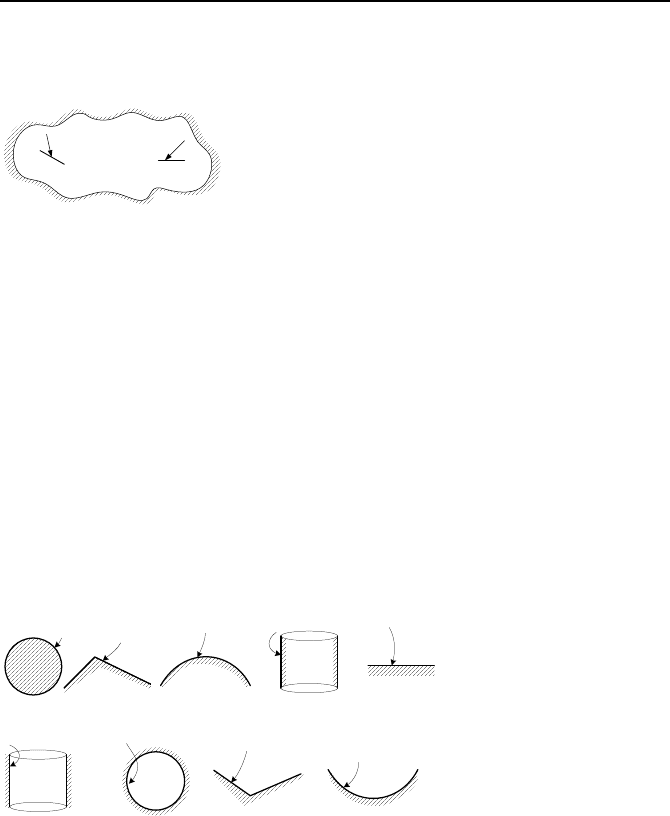
Questions and Problems 595
1000 W/m
2
. Find the answer to the following questions under thermodynamic
equilibrium condition a) the temperature of each surface, b) the absorptivity of
each surface, and c) the emissivity of each surface
GG
T
A
T
B
15. Radiant energy at a rate of 15.000 W/m
2
is received by a gray and diffuse sur-
face. The surface is opaque and has an absorptivity of 0.65. Assume negligible
heat transfer due to convection. The surface temperature is 400 C with a surface
area of 1 m
2
. Find a) the rate of energy absorbed by the surface, b) the rate of en-
ergy emitted by the surface, c) the total energy loss from the surface.
15. A flat metal plate (
ε
= 0.66, and
α
= 0.35) is exposed to solar radiation, at an
irradiation rate of 1000 W/m
2
. Find the plate temperature after a long time expo-
sure (i.e., steady state condition). The convection heat transfer coefficient is esti-
mated at about 20 W/m
2
·K.
16. For the purpose of calculating the view factor for radiation heat transfer, sur-
faces may be divided into three categories of convex, flat (plane), or concave. As
shown in the figure, surfaces a, b, c, and d are examples of convex, and surfaces f,
g, h, and i are examples of concave surface. If a surface can view itself then F
11
>
0 otherwise, F
11
= 0. Consider surfaces a through i, and specify the surfaces that
have non-zero view factor.
A
1
A
1
A
1
A
1
A
1
A
1
A
1
A
1
A
1
ab
c
d
e
fgh i
17. A disk, having a diameter of 1 m, is parallel to and on the centerline of an-
other disk, having a diameter of 1.2 m. The two disks are 1 m apart. Find F
12
and
F
21
. [Ans.: 0.232, 0.161].
18. Find F
12
and F
21
for the following objects. a) Figure a shows a sphere placed
inside a cube. The side of the cube is the same as the diameter of the sphere. b)
Figure b shows a diagonally partitioned long square duct. c) Figure c shows a
pyramid with equal sides. d) Figure d shows quarter of a cylinder exchanging ra-
diation with the base surface of a half cylinder. [Ans.: a) F
12
= 1, F
21
=
π
/6, b) F
12
= 0.5, F
21
= 0.71].
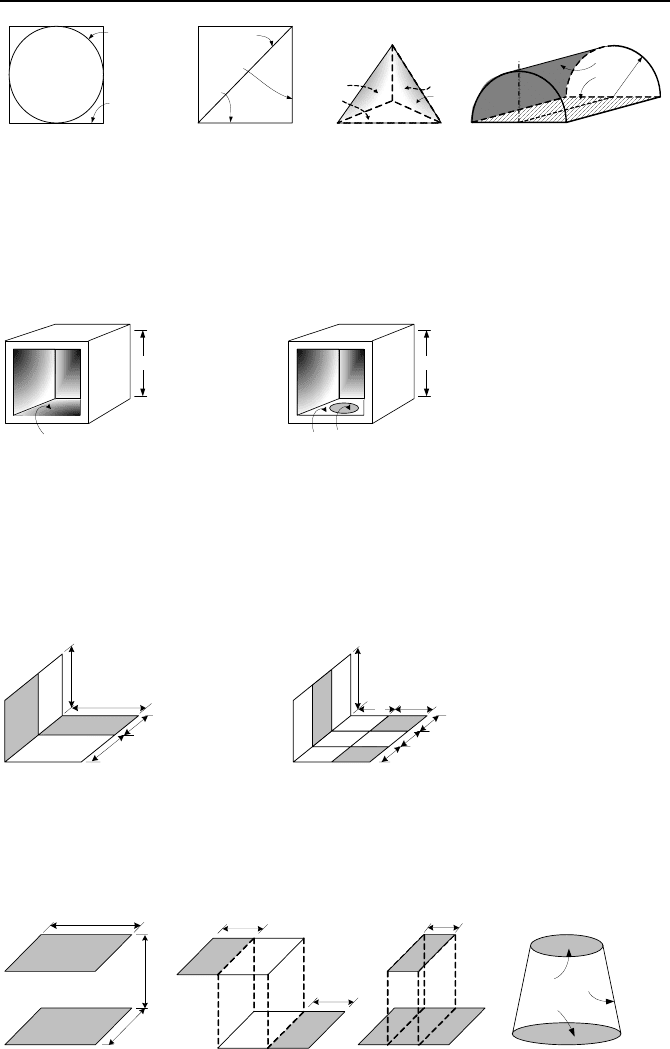
596 IVd. Heat Transfer: Thermal Radiation
A
1
A
3
A
2
A
2
A
1
A
1
A
4
A
3
A
2
A
1
A
2
R
a b c d
19. A right circular cylinder has a height of 1 m and diameter of 75 cm. Find the
view factor for the cylindrical to the base.
20. An oven, as shown in the left figure, is in the shape of a cube of side l. The
surface of the base is A
1
= 0.1 m
2
. All other surfaces have a combined surface
area of A
2
= 0.5 m
2
. Find the view factor F
21
and F
22
.
A
1
A
1
A
3
ll
Problem 20 Problem 21
21. A circular disk of surface area A
3
= 0.02 m
2
is placed on the base surface of
the oven of Problem 20, as shown in the right figure. All other surfaces have a
combined surface area of A
2
= 0.5 m
2
. Find F
12
, F
32
, and F
23
.
22. Two perpendicular rectangles are shown in the figure. Find F
12
for both left
and right figures. In the left figures, a = b = 1 m, and c = d = 0.5 m. In the right
figure, a = 1 m, b = c = 0.5 m, d = e = f = 0.3 m.
c
f
e
d
1
2
1
2
3
d
a
b
a
b
c
23.
Find
F
12
for the two parallel plates shown in the figure, where 1 and 2 repre-
sent the shaded surfaces. The surfaces are
a
= 1 m by
c
= 0.5 m and are
b
= 2 m
apart. For figure b use
d
= 0.2 m and
e
= 0.3 m and for figure c, use
f
= 0.3 m.
For Figure d, use
r
1
= 10 m,
r
2
= 5 m, and the vertical distance between surfaces
A
1
and A
2
is 10 m. For figure d also find F
31
and F
33
.
a
b
c
1
2
d
e
1
2
A
1
A
2
A
3
f
1
2
a b c d
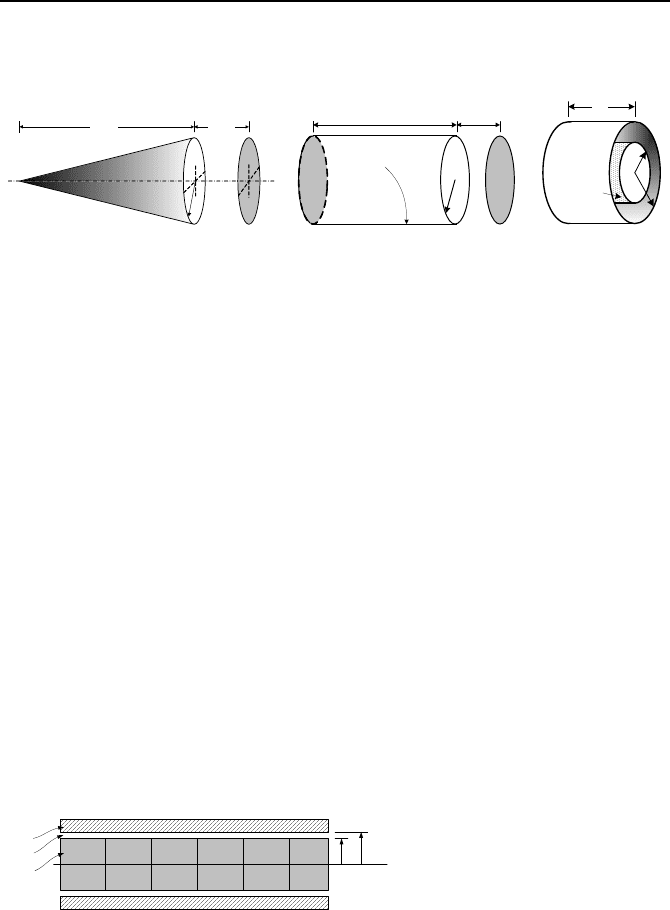
Questions and Problems 597
24. Find F
12
for the cone shown in the figure. Use R = 0.5 m and L
1
= 1.5 m.
Surface A
2
has the same diameter as the base of the cone and is located 0.5 m
apart.
A
1
A
2
R
L
1
L
2
A
1
A
3
L
1
L
2
R
A
2
L
r
2
A
1
A
2
r
1
Problem 24 Problem 25 Problem 26
25. A right circular cylinder with 2R = 0.5 and L
1
= 1.5 m, is open from the right
end. Surface A
2
and A
3
have the same diameter as surface A
1
and is located L
2
=
0.5 m from the open end. Find a) F
23
and b) F
15
where surface 5 is the imaginary
surface of a cylinder between the open end and surface A
3
.
26. Find F
21
for the two concentric cylinders given r
1
= 35 cm, r
2
= 70 cm, and L
= 0.7 m.
27. The cross section of an enclosure is an isosceles triangle. The equal sides are
1 m in length and are at 600 C and 400 C. The base is adiabatic. a) Find the tem-
perature of the base. b) Find the rate of heat transfer received by the side with
temperature of 400 C.
28. Radiation is taking place between two parallel plates and nothing else. Each
plates have a surface area of 1.5 m
2
with emissivities of 0.4 and 0.7. Fine the rate
of heat transfer for temperatures of 150 C and 250 C. [Ans.: 1243 W].
29. Shown is the figure is the theoretical configuration of the fuel pellet and clad-
ding of a fuel rod. Assuming there is no contact between the pellet and the clad-
ding, a gap region exists between the two materials. Find the rate of heat transfer
from the fuel surface to the inside of the cladding by radiation.
Data: T
F2
= 400 C, T
C1
= 350 C, r
F2
= 4.8 mm, r
C1
= 4.9 mm, L = 3.66 m. In
the temperature range of interest, use the following emissivities: for fuel
ε
UO2
≈ 0.8
and for cladding
ε
Zircaloy
≈ 0.26.
Pellet
Gap
Clad
r
F2
r
C1
30. A filament, 1 cm in diameter is held in the center of a spherical bulb. The
filament is at 250 C and the bulb, having a diameter of 5 cm, is at 80 C. Assuming
radiation takes place only between the bulb and the filament, fid the rate of heat
transfer by radiation.
ε
1
=
ε
2
= 0.75.
31. Two small rectangular flat plates, 5 ft by 10 ft are located 5 ft apart. These
plates are located in a large room. The walls of the room are maintained at 65 F.
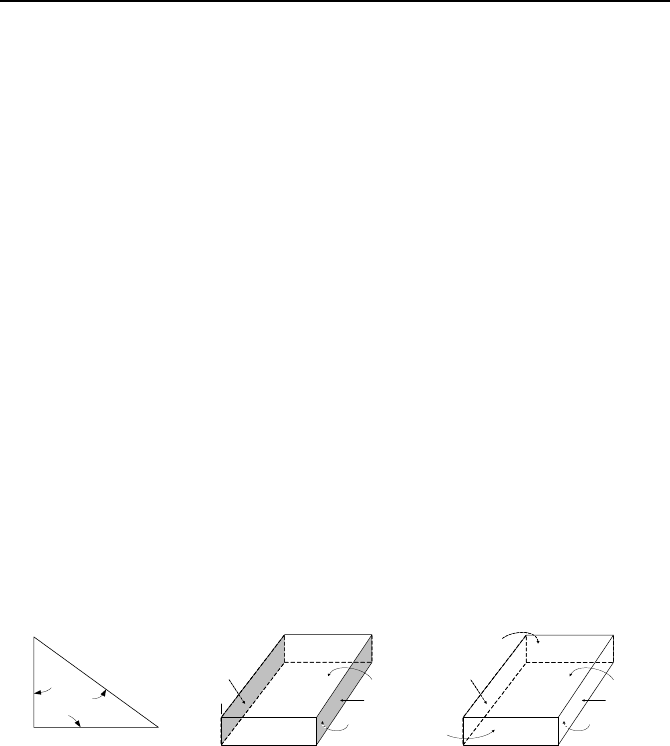
598 IVd. Heat Transfer: Thermal Radiation
The plates exchange radiation with each other and with the room. However, con-
sider only the plate surfaces facing each other. The temperature and diffusivity of
the plates are T
1
= 500 F, T
2
= 900 F,
ε
1
= 0.7, and
ε
2
= 0.9, respectively. Find the
rate of heat transfer from the plates to the room. [Ans.: J
1
= 4240 W/m
2
, J
2
=
16760 W/m
2
,
1
Q
= -0.161E4 W, =
2
Q
0.7026E5 W].
32. Two small rectangular flat plates, 0.5 m by 1 m are located 0.5 m apart.
These plates are located in a large room. The walls of the room are maintained at
35 C. The plates exchange radiation with each other and with the room. How-
ever, consider only the plate surfaces facing each other. The temperature and dif-
fusivity of the plates are T
1
= 900 C, T
2
= 1200 C,
ε
1
= 0.8, and
ε
2
= 0.6, respec-
tively. Find the rate of heat transfer from the plates to the room. [Ans.: J
1
=
95710 W/m
2
, J
2
= 1.712E5 W/m
2
,
1
Q
= 23270 W, =
2
Q
71790 W].
33. The cross section of a duct is a right triangle as shown in the figure. The sides
of this duct are isothermal and are exchanging radiation. Assuming a non-
participating medium between the gray surfaces, find the rates of heat transfer.
Data: T
1
= 500 K, T
2
= 600 K, T
3
= 800 K,
ε
1
= 0.625,
ε
2
= 0.4, and
ε
3
= 0.8.
[Ans.: -28150 W/m, -17070 W/m, 45200 W/m].
34. A duct, consisted of four rectangular flat plates, are radiating with each other
and nothing else. Use the given data to find the radiosity and the rate of heat
transfer for each surface. Data: Length = 1 m, depth, 2 m, height 0.5 m, T
1
= 100
C, T
2
= 200 C, T
3
= 300 C, T
4
= 400 C,
ε
1
= 0.5,
ε
2
= 0.65,
ε
3
= 0.75,
ε
4
= 0.8. The
joins are well insulated so that there is no heat transfer between the plates by
thermal conduction.
A
1
A
2
A
3
3 m
4 m
5 m
A
1
A
2
A
4
A
3
A
1
A
5
A
6
A
2
A
4
A
3
Problem 33 Problem 34 Problem 35
35. A rectangular parallelepiped consists of gray, diffuse, and flat surfaces, radiat-
ing with each other and nothing else. The surface temperatures are maintained at
the specified values. There is a vacuum in the enclosure and thus, no other heat
transfer mechanism except radiation exists. Use the given data to find the radios-
ity and the rate of heat transfer for each surface. Data: Length = 2 m, depth, 3 m,
height 1 m, T
1
= 100 C, T
2
= 200 C, T
3
= 250 C, T
4
= 400 C, T
5
= 500 C, T
6
= 550
C,
ε
1
= 0.5,
ε
2
= 0.65,
ε
3
= 0.75,
ε
4
= 0.8,
ε
5
= 0.55,
ε
2
= 0.65,
ε
3
= 0.85.
36. A triangular duct is shown in the figure. The base of the duct (surface 1) is
maintained at a temperature of 600 K. The left panel (surface 2) is insulated and
the right panel (surface 3) is heated and maintained at 1300 K. Find a) the radiosi-
ties of all surfaces, b) the required rate of heat transfer to surface 3 to maintain the
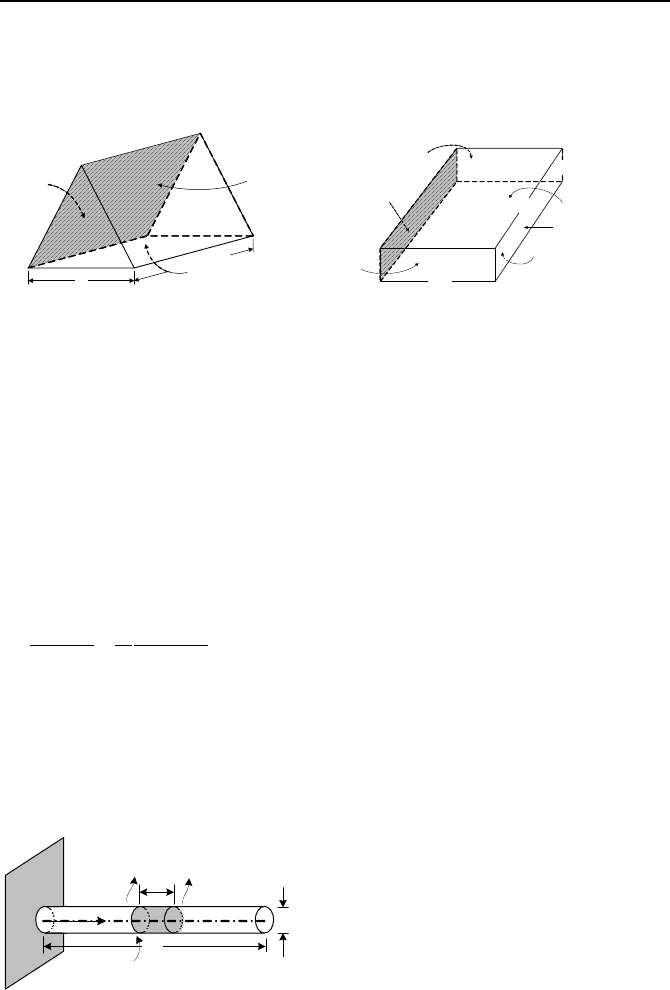
Questions and Problems 599
steady state temperatures as specified, and c) the temperature of the insulated sur-
face. Data: L = 1 m, W = 2 m,
ε
1
= 0.7,
ε
2
= 0.8, and
ε
3
= 0.4.
[Ans.: a) J
1
= 129000 W/m
2
, J
2
= 26,558 W/m
2
, J
3
= 77,784 W/m
2
, b) 76.84 kW,
and c) 1082 K].
L
A
2
A
3
Insulated
Surface
A
1
W
Heated
Surface
A
1
A
5
A
6
A
2
A
4
A
3
W
L
H
Problem 36 Problem 37
37. Consider the rectangular parallelepiped of Problem 34 with the back panel
(surface A
3
) is now insulated. All other surface temperatures remain unchanged.
Find the rate of heat transfer to surface A
6
to maintain the temperatures at their
specified values. Data: T
1
= 500 K, T
2
= 600 K, T
3
= 550 K, T
4
= 650 K, T
5
= 700
K, T
6
= 1750 K,
ε
1
= 0.3,
ε
2
= 0.4,
ε
3
= 0.4,
ε
4
= 0.18,
ε
5
= 0.26,
ε
6
= 0.25, L = 1 m,
W = 0.5 m, H = 0.25 m. [Ans.: 15.568 kW].
38. A cylindrical spine used as a fin to enhance the rate of heat transfer from a
surface. Our goal is to find the one-dimensional temperature distribution in the
spine. Write the conservation equation of energy for the control volume shown in
the figure. Show that temperature at every location on this fin and at every time is
found from the solution to:
()
0),(
),(1),(
22
2
2
=+−
∂
∂
=
∂
∂
txmm
x
tx
t
tx
rc
θ
θ
α
θ
where
θ
= T(x, t) – T
f
, a =
ρ
c/k, m
c
= (Ph
c
/
ρ
Ac)
0.5
, and m
r
= (Ph
r
/
ρ
Ac)
0.5
. In these
relations, h
c
is the heat transfer coefficient for heat transfer by convection, and h
r
is the heat transfer coefficient for heat transfer by radiation. Note that h
r
is de-
fined as:
()
(
)
22
ffr
TTTTh ++=
εσ
k,
ε
D
q"
r
q"
C
.
.
T
B
T
f
L
dx
x
Specify the required initial and boundary conditions.
39. Show that the steady state temperature distribution in a cylindrical spine is the
solution to:

600 IVd. Heat Transfer: Thermal Radiation
()
0)(
)(
22
2
2
=+− xmm
dx
xd
rc
θ
θ
where m
c
= (Ph
c
/kA)
0.5
, and m
r
= (Ph
r
/kA)
0.5
. Use the given data to find the tem-
perature distribution at steady state in the above fin. Data: L = 15 cm, D = 1 cm,
T
B
= 350 C, T
f
= 27 C, k = 50 W/m·C, h
c
= 15 W/m
2
·C,
ε
= 0.75. The tip of the fin
is losing energy by both radiation and convection.
[Hint: You may solve this problem analytically or numerically. The analytical
solution follows the method described in Section 8 of Chapter IVa. Since we have
linearized the differential equation by choosing the heat transfer coefficient, as
shown in Problem 38, an iterative solution is required regardless of the solution
method we choose (h
r
, therefore, m
r
are unknowns). The initial guess to estimate
h
r
for thermal radiation is obtained by ignoring thermal radiation (i.e., by setting
m
r
= 0). Upon obtaining the initial guess for temperature, we then include thermal
radiation but evaluate h
r
at the temperature calculated in the previous iteration. At
the end of each trial, we find:
k
kk
T
TT
1−
−
=
ε
where k is the iteration index. The iteration is terminated when
ε
≤
ε
s
where
ε
s
is
the specified convergence criterion].
V. Two-Phase Flow and Heat Transfer
Va. Two-Phase Flow Fundamentals
At the first glance, two-phase or, in general, multi-phase flow seems an exotic
topic used only in scientific experiments. In reality however, we may encounter
two-phase flow in everyday activities. Flow of carbonated water pouring out of a
bottle, ocean waves carrying oxygen, or even the action of the windshield wiper to
remove rain involves two-phase flow. These are examples of isothermal flow. Of
special interest is the flow of water and steam in heated channels such as in a
BWR core or the tube-bundle of a PWR steam generator. Although continuous ef-
forts are being made to formulate two-phase flow aspects by analytical means,
most two-phase flow formulations are based on experimental data and hence are in
the form of correlations. In this chapter, following the definition of pertinent
terms, we discuss such important topics as calculation of two-phase flow pressure
drop and critical flow.
1. Definition of Two-Phase Flow Terms
Two-phase flow generally refers to the flow of a liquid and a gas or vapor such
as the flow of water and steam, water and air, etc.
Two-phase mixture refers to the mathematical analysis of two-phase flow
where the two-phase mixture is treated as a pseudo single-phase.
Two-fluid model refers to the mathematical analysis of two-phase flow where
phases are treated separately. Such treatment requires consideration of mass,
momentum, and energy transfer between the phases. This model provides more
information but also requires more experimentally based constitutive equations
than a two-phase mixture model.
Multifluid flow refers to such cases as the flow of water droplets in bulk steam,
surrounded by a film of flowing water.
Multi-phase flow refers to the flow of several phases such as steam, ice, and
water.
